By Janet Cruz
Before there was social media, the internet or cell phones, there was Citizen Band Radio (CB Radio) as a method of communication. Michael Minery, a 20-year Lake Havasu City resident, knows all too well about this vintage technology and has a unique collection.
“I am just such a radio nerd,” Minery said.
The Minery house is filled with CB radios, and many antennas on his roof. Radios that are in need of repair, are also found. Bringing them back to life is also something Minery enjoys doing.
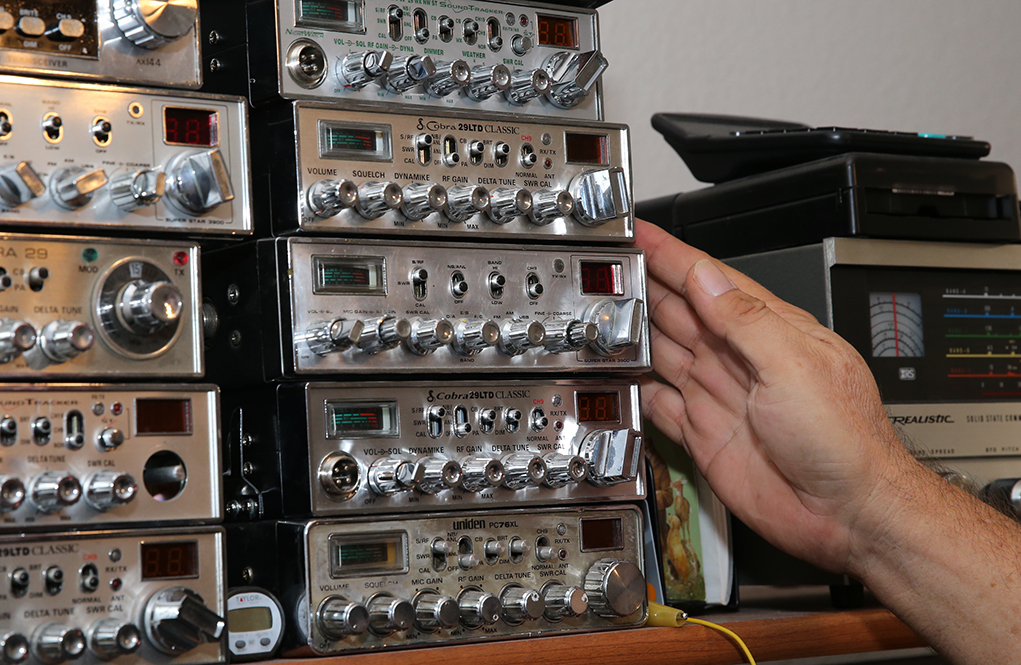
Mike Minery places his hand on his first CB radio that was once installed in his Camaro. Jillian Danielson/RiverScene
“When someone brings me a radio that has gone bad, I go ahead and replace the parts to make sure they end up working properly. It’s just something I love to do.”
Although the technology is not around as much, Minery said the parts are not that hard to find and often purchases them online.
Minery first became interested in radios when he was around 16 years old, and said he has always been fascinated by them.
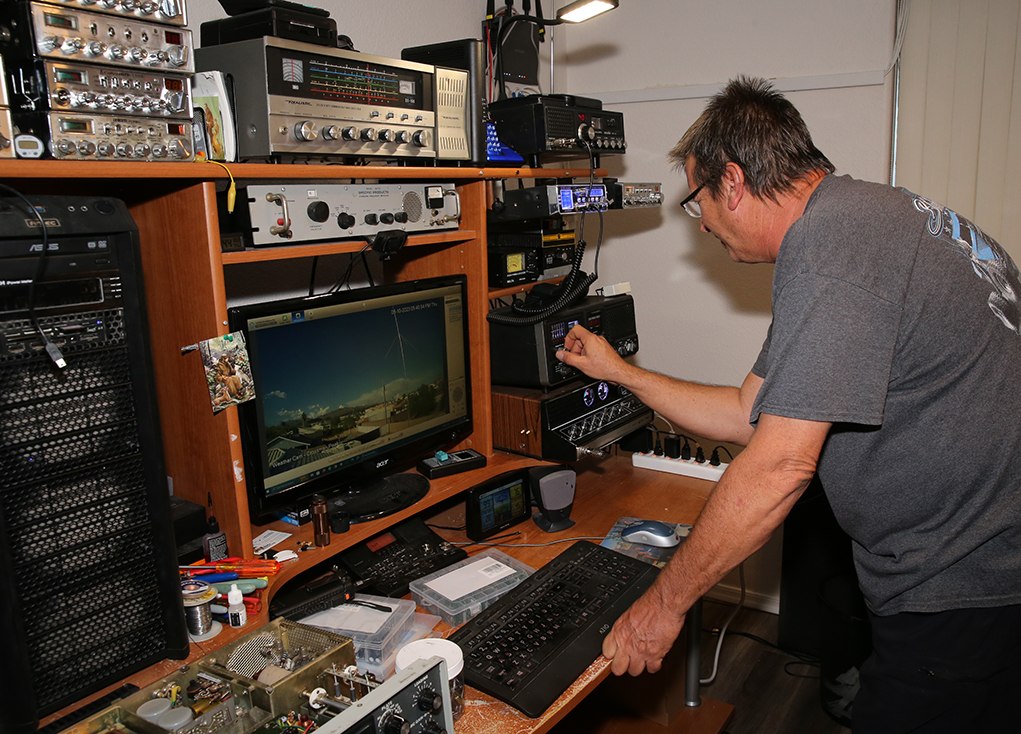
Mike Minery at his desk with his radios. Jillian Danielson/RiverScene
“Just being able to send your voice out through the air is always just so interesting to me.”
CB Radio technology appeared in the United States before the 1950s, as a personal radio or two-way communication system for citizens to use. It wasn’t until 1970, Minery recalls, the CB radio became popular and available for personal use. At that time, he saw his first radio.
Minery said, “The ionosphere is 50 to 400 miles high and can be electrically charged by the sun. Sometimes it’s not electrically charged but when it is, I’m able to talk long distances – over 8,000 miles or more.
“It usually happens in the daytime to the early evening, and it can go away in an instant – just like a storm cloud around here. I’ve talked to people in Australia, Hawaii and Jamaica.
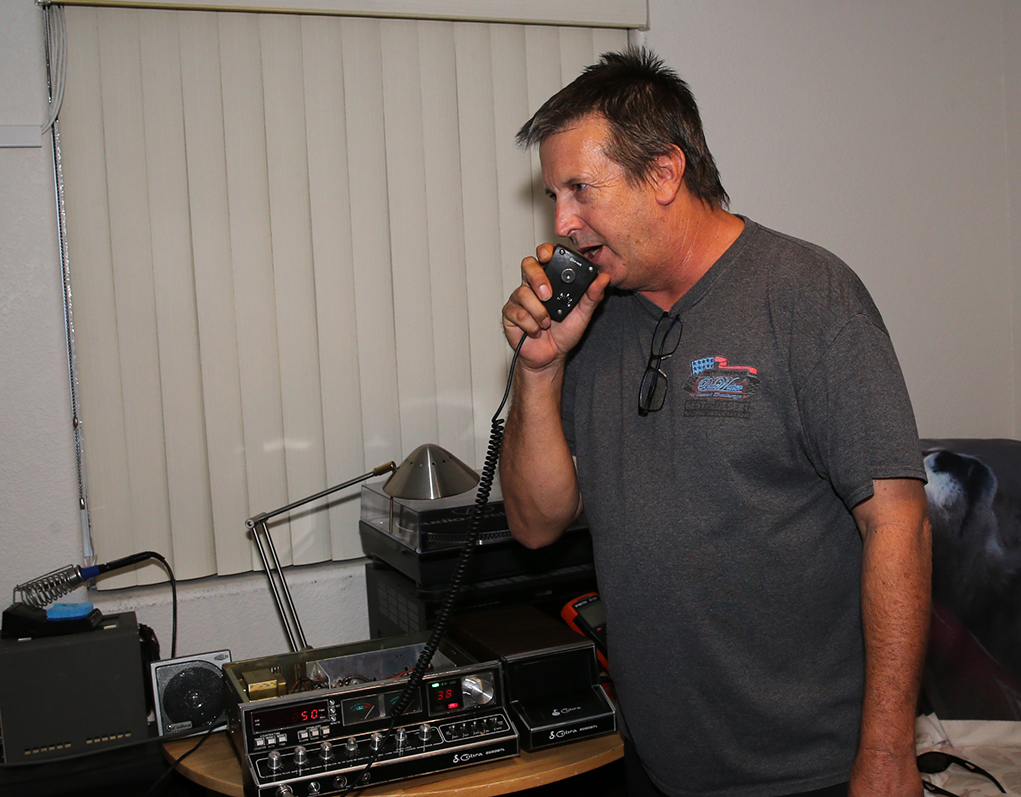
Minery talks to someone in Australia on one of his radios. Jillian Danielson/RiverScene
“I remember taking my father’s radio apart and getting in trouble for it,” Minery said. “As I got a bit older I continued to get really into the CB radio thing.”
Fast forward today and often Minery can be seen communicating with many people around the world.

Minery’s A99 11 meter cb radio antenna. Jillian Danielson/RiverScene
And sure, cell phones can do the same thing today. But for Minery, he said he enjoys being taken back to that time. He has an A99 11 meter cb radio antenna on his roof as well as cameras to capture timelapses of storms approaching Havasu.
“Sure that whole technology kind of died out but there’s still a lot of people on the radio in the United States and all over the world, not just here,” Minery said. “It’s not everyone’s thing. Just like there are many collectors or groups out there, CB Radio is my thing.”
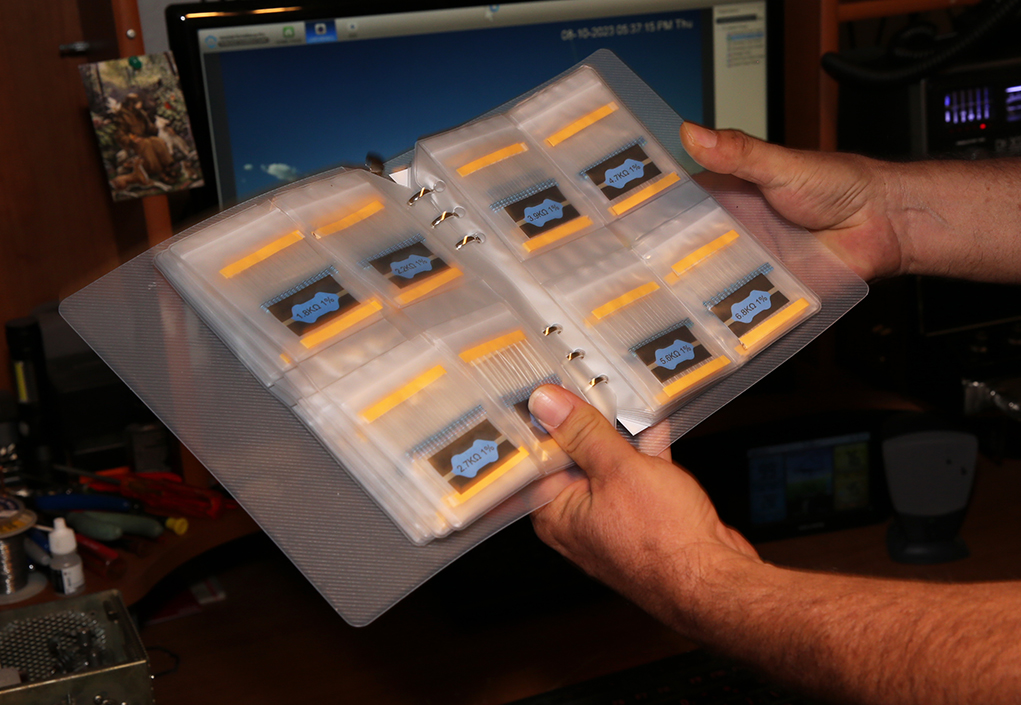
Minery holds a book full of different values of resistors that he uses for his radios. Jillian Danielson/RiverScene







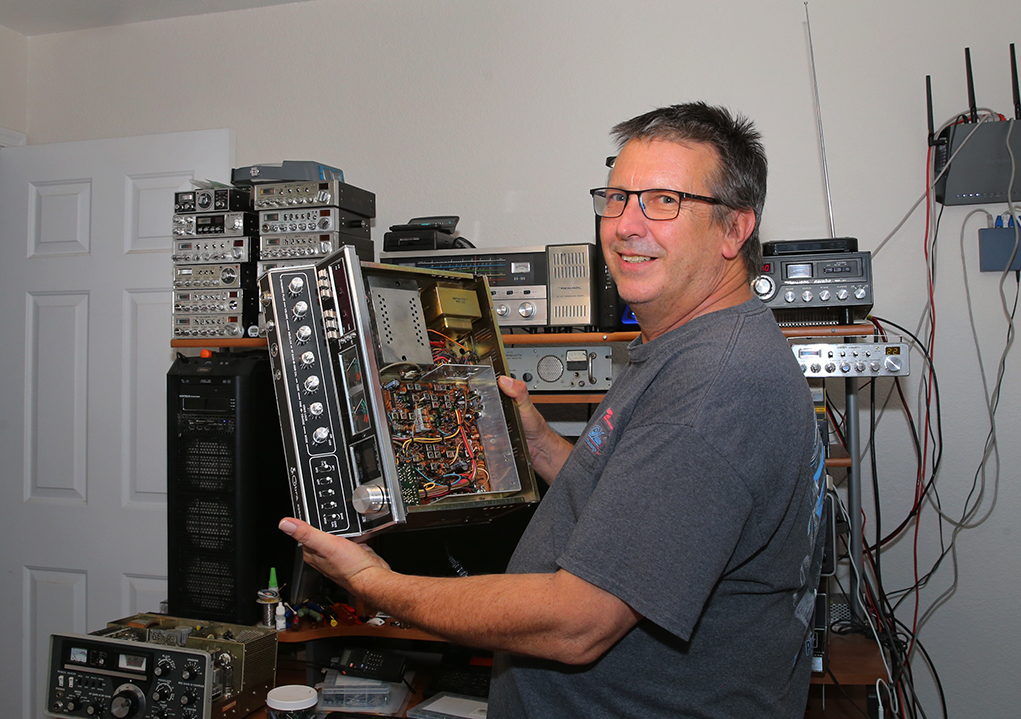





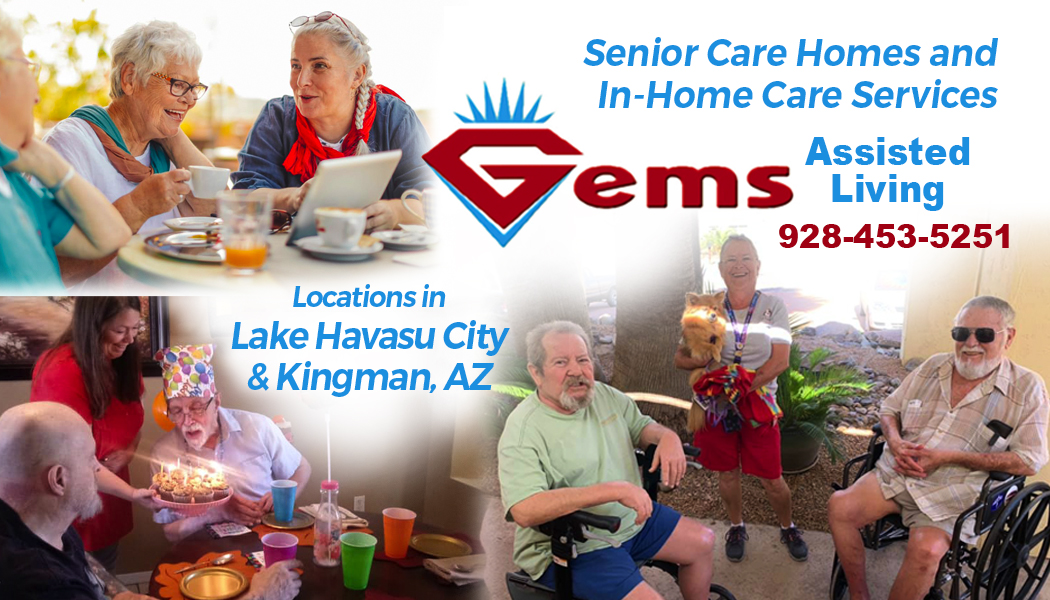




Decades before the 11 meter band was moved from the Amateur radio bands to facilitate CB there was legally licensed Amateur Radio. Ham radio still provides the most reliable emergency communications when disaster strikes (Witness Hams on Maui providing communications to facilitate emergency response).
CB has its place but for hobby and emergency comms the licensed Amateur Radio Service is far superior and the licenses are very easy to obtain!